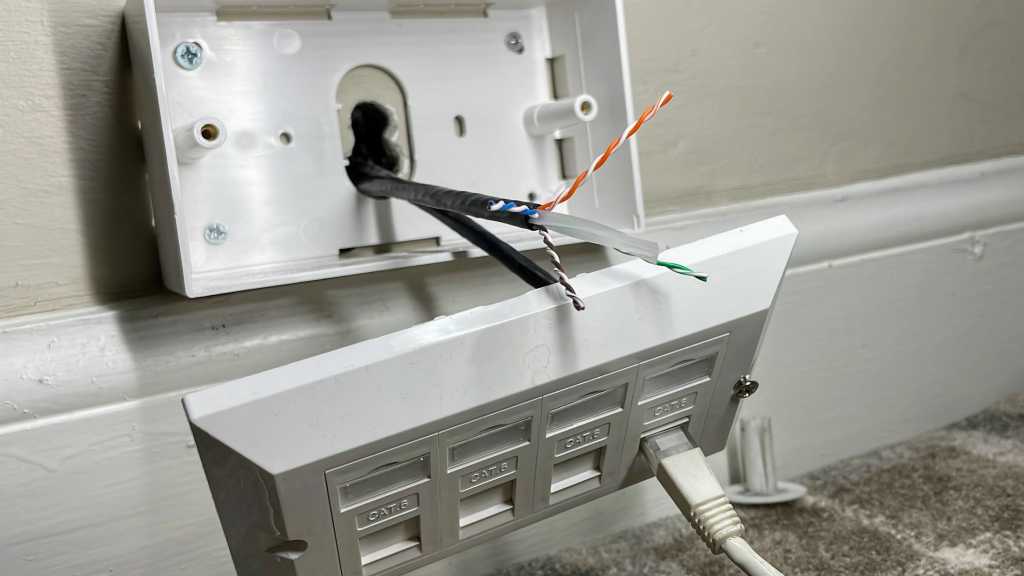Hi. It's my first time here, I have a question and Google hasn't been useful for me so far.
My house has landline phone cables going through the walls, I think it's to setup multiple phones but we only have one and it's not connected to those wires
There's a jack in my room where my computer is so I was wondering if I could run ethernet over those cables as the router is located in the living room downstairs and I'm upstairs, wi-fi signal and speed is awful and it keeps disconnecting in the middle of downloads or online classes which is a problem.
My idea is to run a cable from the router to the jack that's downstairs then another cable from the jack upstairs into my computer. As far as I know RJ11 connectors fit the RJ45 ports present on both the router and computer.
The wall jacks have 4 wires coloured brown, light brown, red and green.
I can't get a better router as it's too expensive for me (I'm a college student) and I borrowed a kit of powerline adapters from a friend and it's even worse than wi-fi.
BTW speed isn't a concern, I've read some people saying RJ11 is limited to regular 10Mbit/sec ethernet, well that won't be a problem as our service is only 1Mbit/sec.
Thanks.
My house has landline phone cables going through the walls, I think it's to setup multiple phones but we only have one and it's not connected to those wires
There's a jack in my room where my computer is so I was wondering if I could run ethernet over those cables as the router is located in the living room downstairs and I'm upstairs, wi-fi signal and speed is awful and it keeps disconnecting in the middle of downloads or online classes which is a problem.
My idea is to run a cable from the router to the jack that's downstairs then another cable from the jack upstairs into my computer. As far as I know RJ11 connectors fit the RJ45 ports present on both the router and computer.
The wall jacks have 4 wires coloured brown, light brown, red and green.
I can't get a better router as it's too expensive for me (I'm a college student) and I borrowed a kit of powerline adapters from a friend and it's even worse than wi-fi.
BTW speed isn't a concern, I've read some people saying RJ11 is limited to regular 10Mbit/sec ethernet, well that won't be a problem as our service is only 1Mbit/sec.
Thanks.



